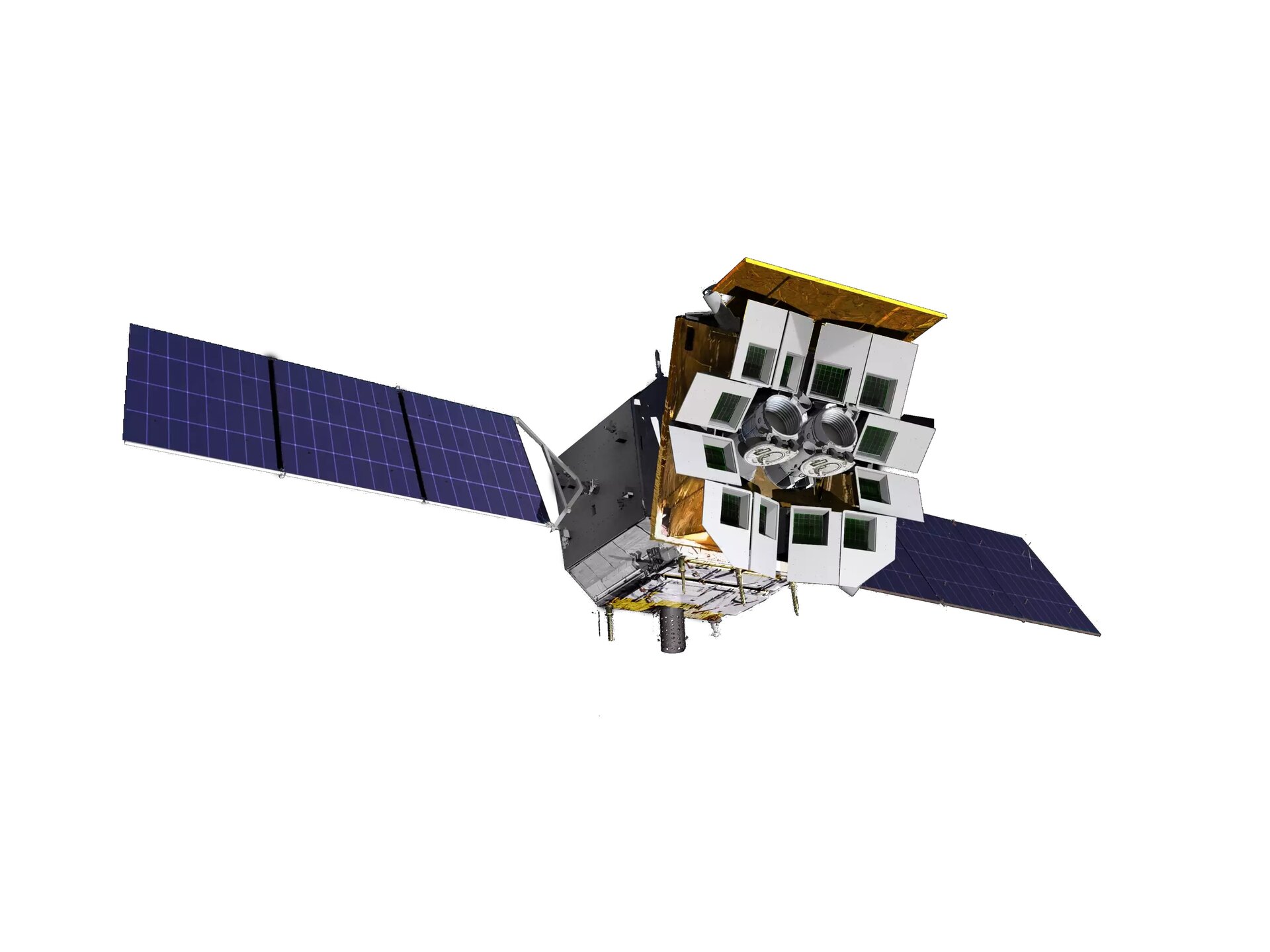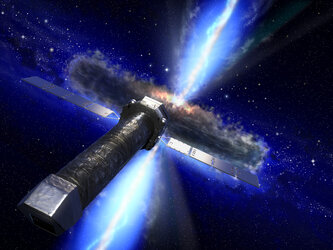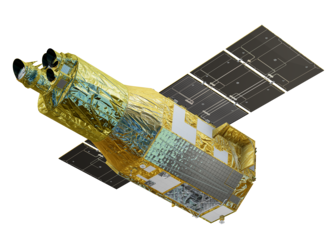Einstein Probe factsheet
Overview of the Einstein Probe mission.
Name: Einstein Probe
Planned launch: January 2024
Mission theme: Monitor the Universe in X-ray light
Partnership: A mission by the Chinese Academy of Sciences (CAS) in collaboration with the European Space Agency (ESA) and the Max Planck Institute for Extraterrestrial Physics (MPE).
European contributions: ESA provided support for the testing and calibrating of the detectors and optical elements of the Wide-field X-ray Telescope, one of the two science instruments.
ESA also helped develop and test the mirror assembly and electron diverter of the Follow-up X-ray Telescope, the other science instrument.
Through-out the mission, ESA’s ground stations will be used to help download data from the spacecraft.
Mission objectives: Einstein probe will search the Universe for cosmic variable objects and transient phenomena shining in X-ray light.
Using its large field of view, Einstein Probe can monitor a huge part of the Universe at once. During the three-year mission a systematic survey will lead to the discovery of X-rays from compact objects accreting surrounding material such as black holes and neutron stars. Einstein Probe will also detect light from gamma-ray bursts, supernovae, flares from other stars and events within the Solar System such as emission from comets.
Some supermassive black holes are called dormant because we have not detected any light from them so far. However, the gravity of these black holes can be sufficient to pull apart nearby stars, making them shine bright in X-ray light. Einstein Probe will look for X-rays emitted during these so-called tidal disruption events and discover these otherwise dormant and hard-to-detect black holes and study how matter falls onto them.
Finally, gravitational wave astronomy has grown into a mature discipline. When two massive objects such as two neutron stars or a neutron star and black hole collide, they create waves in the structure of space-time itself and emit light across the spectrum, including X-rays. Several detectors on Earth are able to measure gravitational waves as they pass by, but measurements do not offer a complete picture of the properties of the massive bodies involved. Einstein Probe will look for X-ray light from merging events and help to locate the massive bodies and study their properties.

What’s special?
The mission uses a novel type of optics, inspired by the eyes of lobsters, which allows for a large field of view. In three orbits around Earth, Einstein Probe is able to observe almost the entire night sky. This sets the mission apart from ESA’s other missions XRISM and Athena, who have a higher spectral and spatial resolution but a limited field of view. Einstein Probe will observe the sky in a glance and search for cosmic variable objects and transient phenomena.
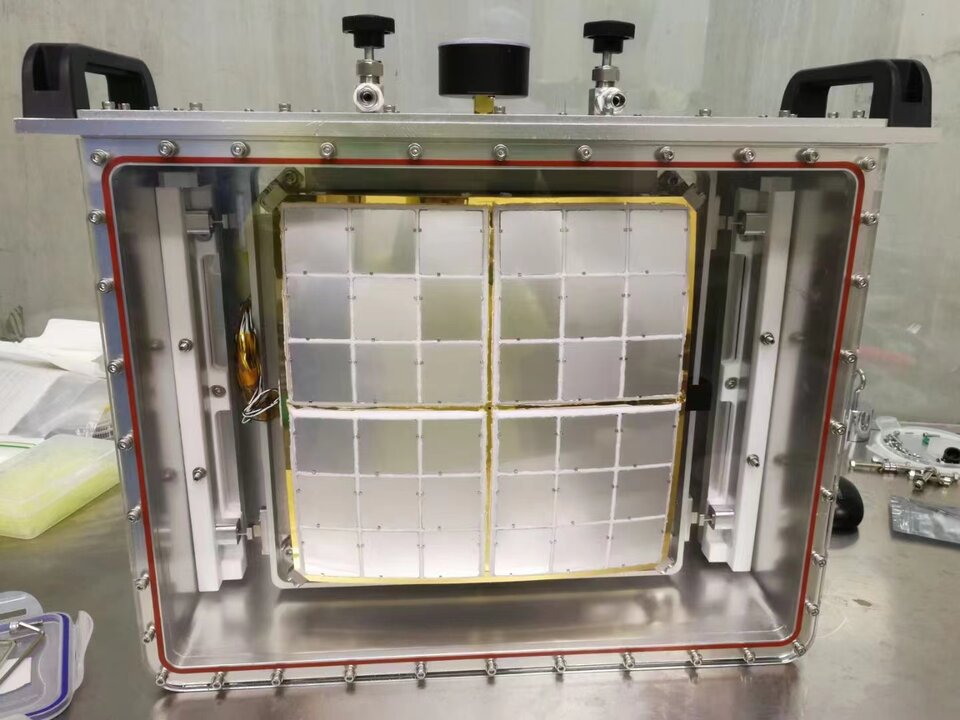
Spacecraft and instruments: The satellite has a total mass of 1450 kg and measures 3 by 3.4 metres. Einstein probe carries two scientific X-ray telescopes. The Wide-field X-ray Telescope (WXT) uses lobster-eye optics, and the Follow-up X-ray Telescope (FXT) is a Wolter-I type telescope.
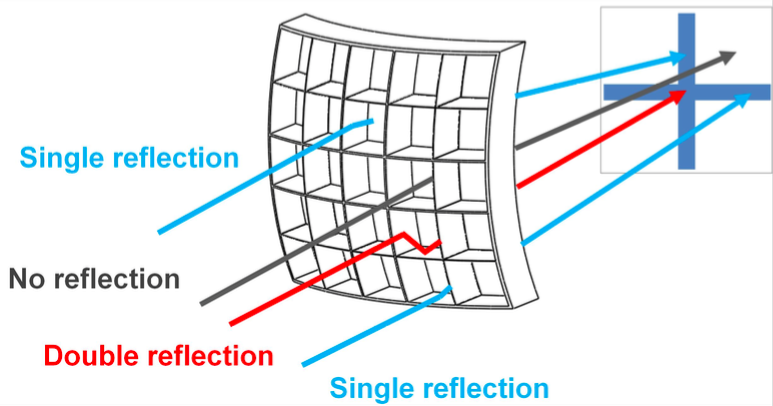
Wide-field X-ray Telescope (WXT)
Inspired by the eyes of lobsters, astronomers have started developing telescopes using similar optics. Lobster eyes are made up of parallel square pores arranged on a sphere that reflect light towards a spherical centre. The Wide-field X-ray Telescope works in a similar way: hundreds of thousands of square tubes guide X-rays down to a CMOS light detector. On the detector the X-rays create a typical ‘plus’ shaped image. A big advantage of this novel technology is that the field of view of the telescope can be extended almost indefinitely. The WXT consists of 12 modules, together creating a view of 3600 square degrees.
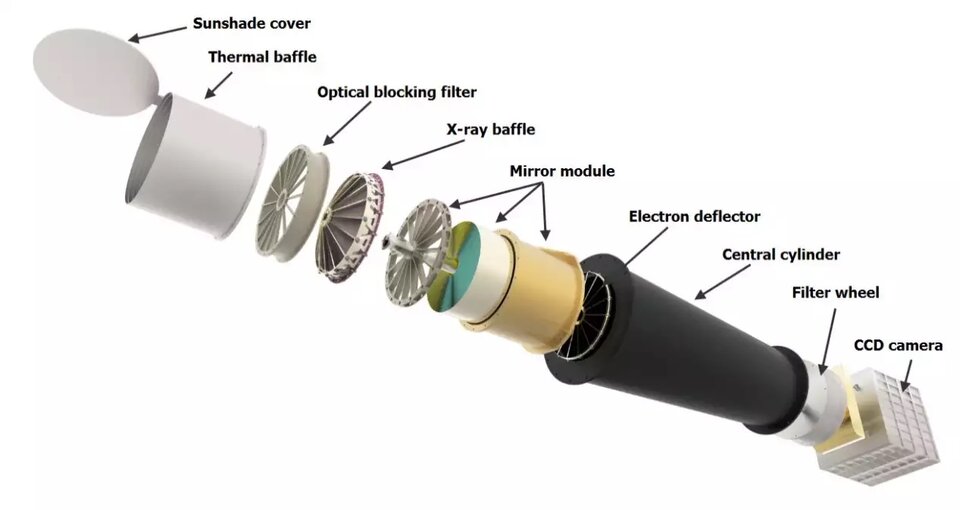
Follow-up X-ray Telescope (FXT)
The Follow-up X-ray Telescope is the more classic Wolter-I type of X-ray telescope. The instrument comprises two identical units, each having a mirror module consisting of 54 gold coated shells. The FXT compensates its narrow field of view with a much higher resolution and much larger light collecting power, making it a great tool to hone in on X-ray sources detected with the WXT’s wide-field view. A thermal baffle at the end of the telescope helps stabilise the temperature of the mirror and protects the instrument against stray X-ray light from reflections of the mirror.
Journey and orbit: Einstein Probe launched on 9 January 2024 on a Chang Zheng (Long March) rocket from the Xichang Satellite Launch Centre in China. The satellite orbits Earth in a circular low orbit at a height of 600 km with an orbital inclination of 29 degrees.
Lifetime: Three years of operations with possible extensions up to an additional two years.
History: The new lobster-eye technology used on board Einstein Probe was tested by the Lobster Eye Imager for Astronomy (LEIA), launched in 2022 on the CAS’s SATech-01 satellite. LEIA has already completed its two primary goals: the in-orbit performance validation of micro-pore optics and detector technology, and a study of the in-orbit calibration procedure for a wide-field X-ray focusing telescope. LEIA has a similar instrument set-up as one of the twelve WXT modules on Einstein Probe.


